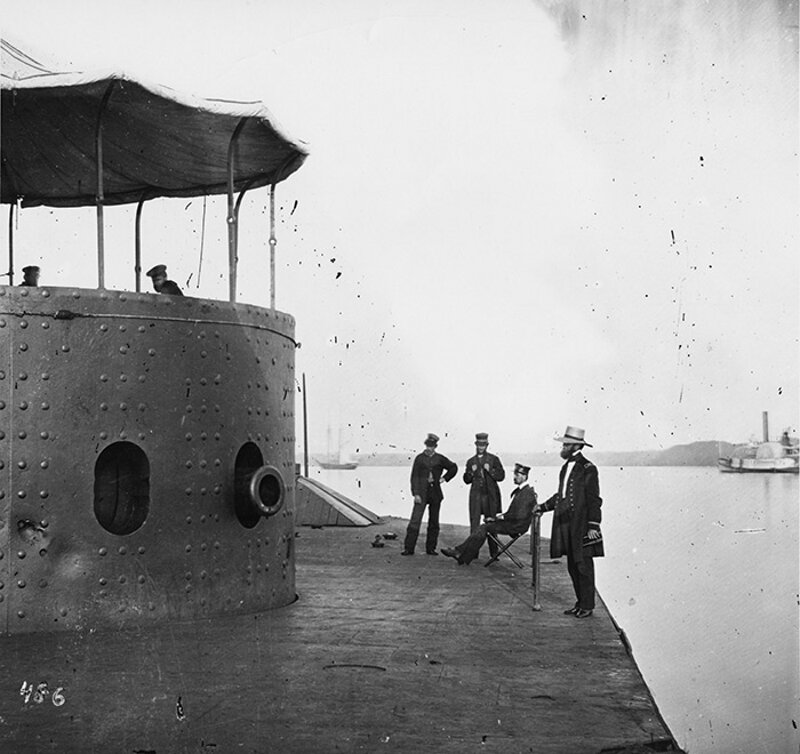
By David W. Alberg, Superintendent - Monitor National Marine Sanctuary
August 26, 2016
“To forget the dead would be akin to killing them a second time.” - Ellie Wiesel

A diver swims above the bow of the USS Monitor. Image courtesy of NOAA. Download larger version (jpg, 2.8 MB).
In 1975, our country established the first National Marine Sanctuary off the coast of North Carolina. It was created to protect the shipwreck of the Civil War ironclad USS Monitor, lost in a storm December 31, 1862, along with 16 of her crew. The creation of the Monitor sanctuary was as much about honoring our history and the sacrifice of the men who fought to preserve our union as it was about protecting the actual shipwreck, which still rests peacefully on the bottom of the Atlantic.

Officers stand on the deck of the U.S.S Monitor in this image captured on July 9, 1862, by Union photographer, James F. Gibson. Image courtesy of Library of Congress. Download larger version (jpg, 4.5 MB).
In the decades that followed the designation of the Monitor sanctuary, the national marine sanctuary system has grown to include more than 14 other special places around the world, each with their own distinct resources and stories to tell. But the Monitor sanctuary is unique in that it reminds us of the cost of war and the never-ending struggle between man and the sea.
Nearly 80 years after the Monitor’s loss, our nation found itself once again on the brink of war. And although the technologies had changed and the scale of the war had become global, the issues that were being fought for would define the face of freedom for millions. Within weeks of the attack on Pearl Harbor, German U-boats began patrolling off the coast of North Carolina, sinking merchant ships and allied Naval vessels with impunity. In 1942 alone, more than 80 ships were sunk and over 1,600 men were lost - 1,100 of them merchant seaman.
But unlike the loss of Monitor which was mourned by a nation and honored still to this day, many of the World War II (WWII) losses off North Carolina went unannounced in an effort to keep the war effort going and morale on the home front high. As a result, few people to this day know how close WWII came to the shores of the United States or the price paid by merchant mariners in defense of our nation’s freedom.
For the past eight years, NOAA, through the Monitor National Marine Sanctuary, has been studying these shipwreck losses in an effort to document and preserve this rich history and share it with the American public. From this effort has grown an initiative to consider expanding the boundaries of the Monitor Sanctuary to formally protect many of these WWII wartime shipwrecks. Like battlefields that have been protected on land, such as Gettysburg, Shiloh, and Antietam, the waters off North Carolina represent an opportunity for our nation to honor the men and women who gave so much in defense of their country and assure their memory will never be forgotten.
The 2016 Battle of the Atlantic project will provide new insight into this dark chapter of American history. NOAA and its partners will share the images and data we collect to help paint a greater understanding of our WWII past. Now is the time to honor this history and the members of the “greatest generation” that pass away more and more each day. It is time to recognize this underwater battlefield for what it is and pay tribute to the thousands of sailors who lost their lives in these waters.